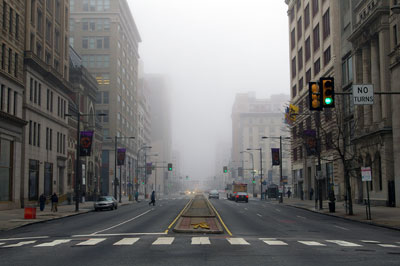Ozone Pollution
When a good gas turns bad!
Ozone (O3) is a gas that forms when three atoms of oxygen are combined. In the upper-atmosphere, ozone is found naturally and protects the earth from harmful ultraviolet radiation. But ground-level ozone (smog) is man-made, a result of pollutants emitted by motor vehicles, power plants, industrial manufacturing and other sources.
Automobile exhaust and industrial emissions release a family of nitrogen oxide gases (NOx) and volatile organic compounds (VOC), by-products of burning gasoline and coal. NOx and VOC combine chemically with oxygen to form ozone during sunny, high-temperature conditions of late spring, summer and early fall. High levels of ozone are usually formed in the heat of the afternoon and early evening, dissipating during the cooler nights
Adverse Health Effects
People with lung disease, children, older adults, and people who are active can be affected when ozone levels are unhealthy. Numerous scientific studies have linked ground-level ozone exposure to a variety of problems, including:
-
Airway irritation, coughing, and pain when taking a deep breath
-
Wheezing and breathing difficulties during exercise or outdoor activities
-
Inflammation, which is much like a sunburn on the skin
-
Aggravation of asthma and increased susceptibility to respiratory illnesses like pneumonia and bronchitis
Permanent lung damage with repeated exposures.
Healthy people also experience difficulty in breathing when exposed to ozone pollution. Because ozone pollution usually forms in hot weather, anyone who spends time outdoors in the summer may be affected.
Environmental Effects
Ozone pollution damages plant life and is responsible for billions of dollars in reduced crop production in the United States each year. It interferes with the ability of plants to produce and store food, making them more susceptible to disease, insects, other pollutants, and harsh weather. Ozone damages the foliage of trees and other plants, ruining the landscape of cities, national parks and forests, and recreation areas.








